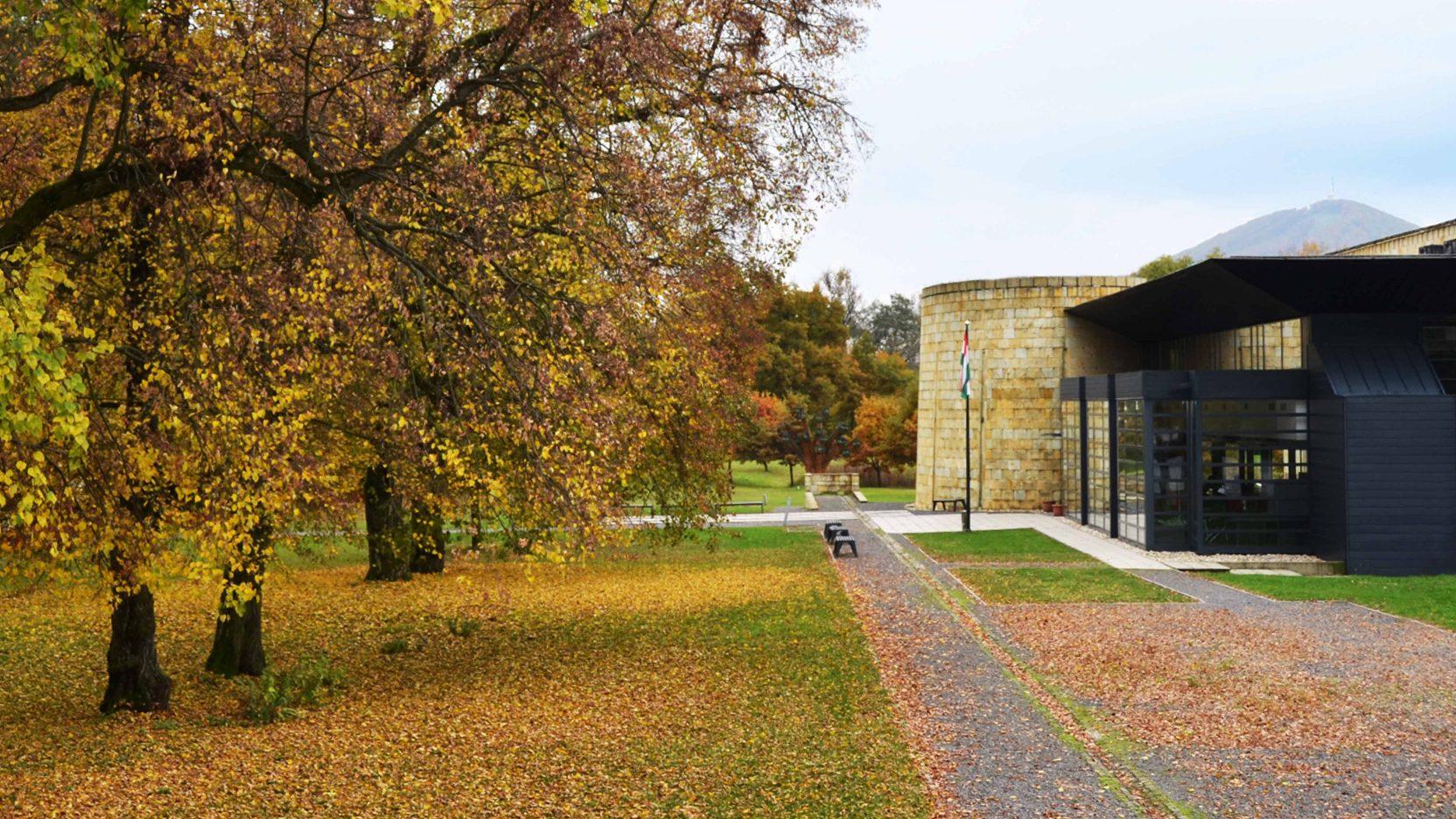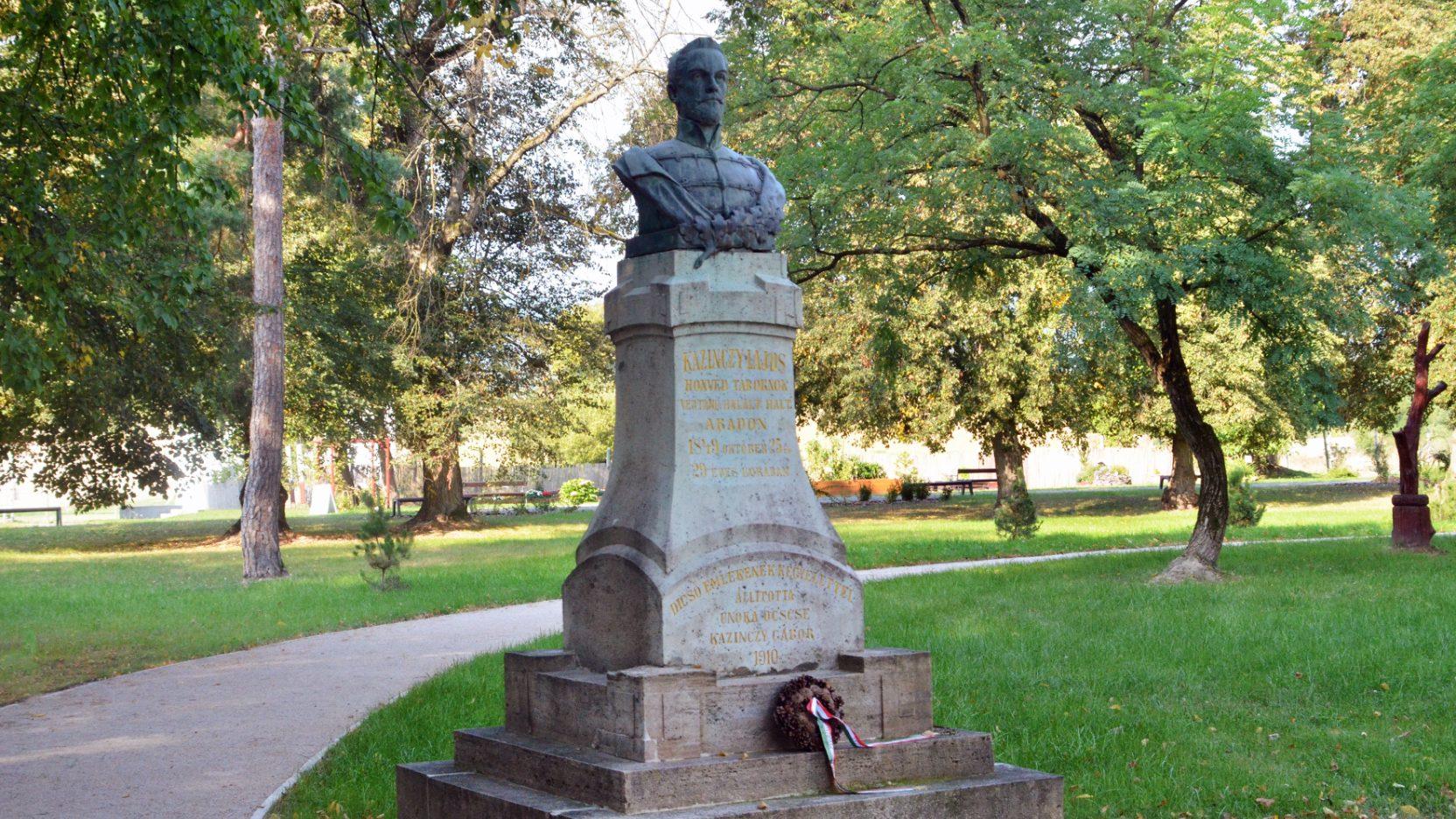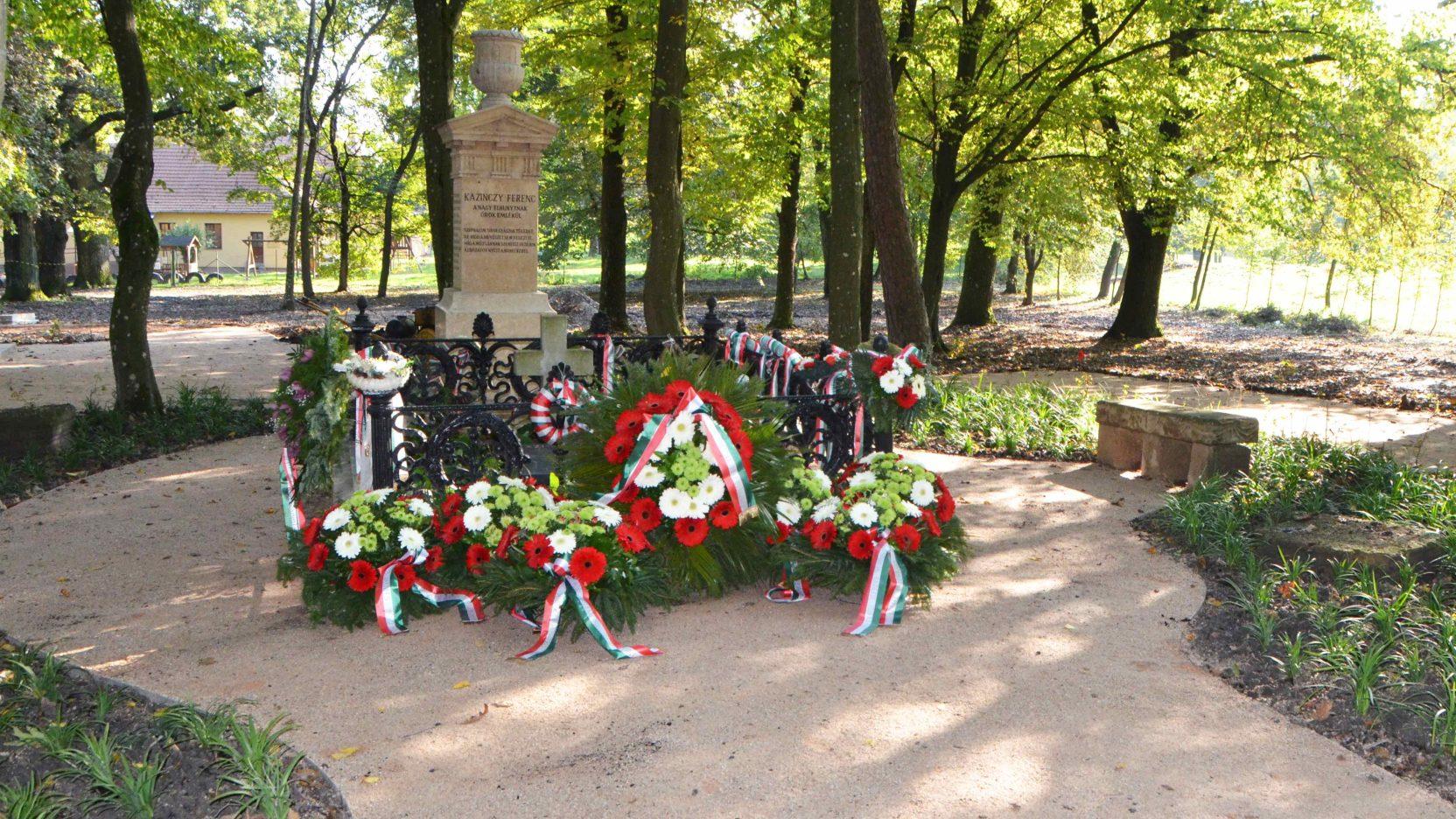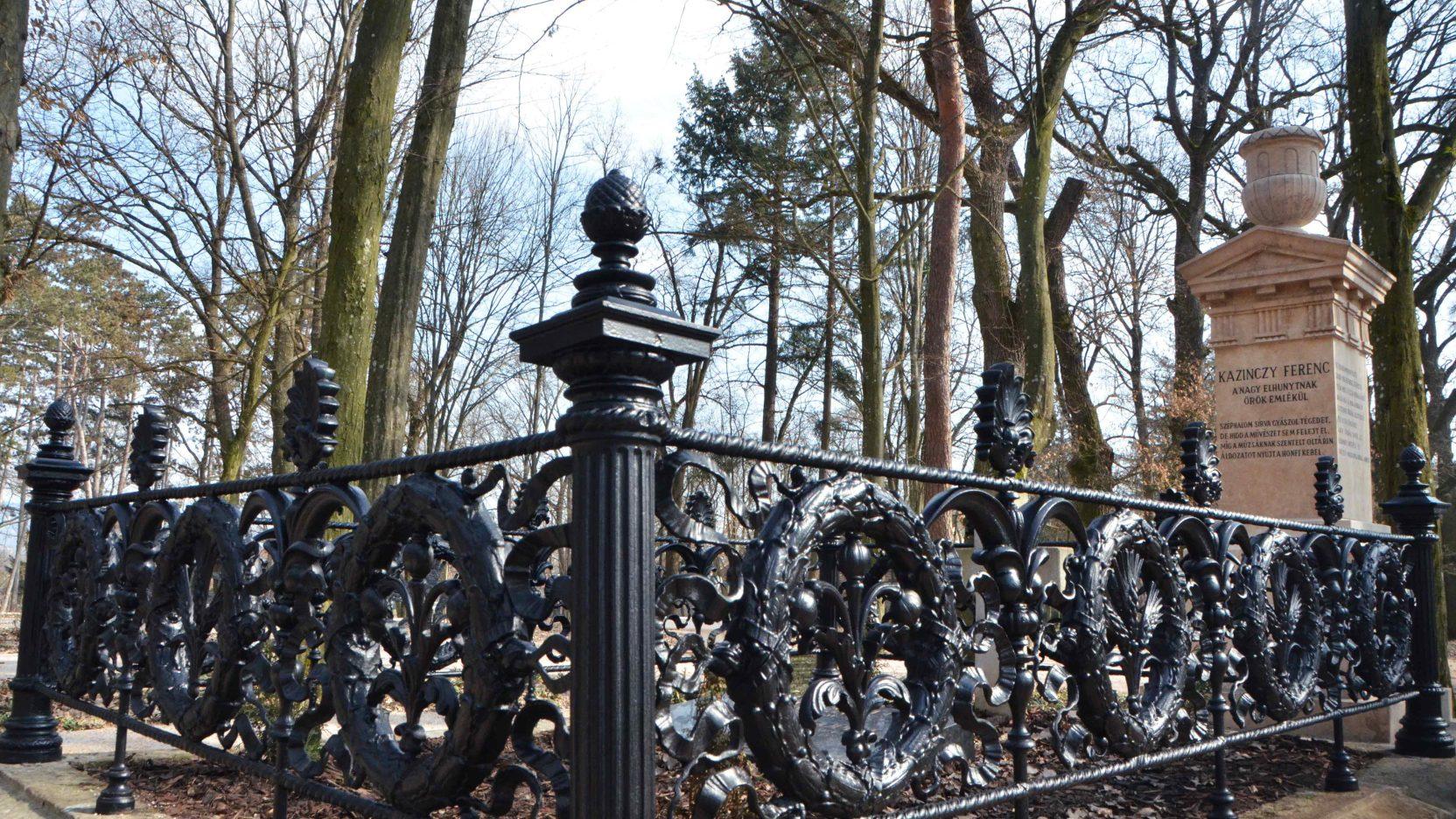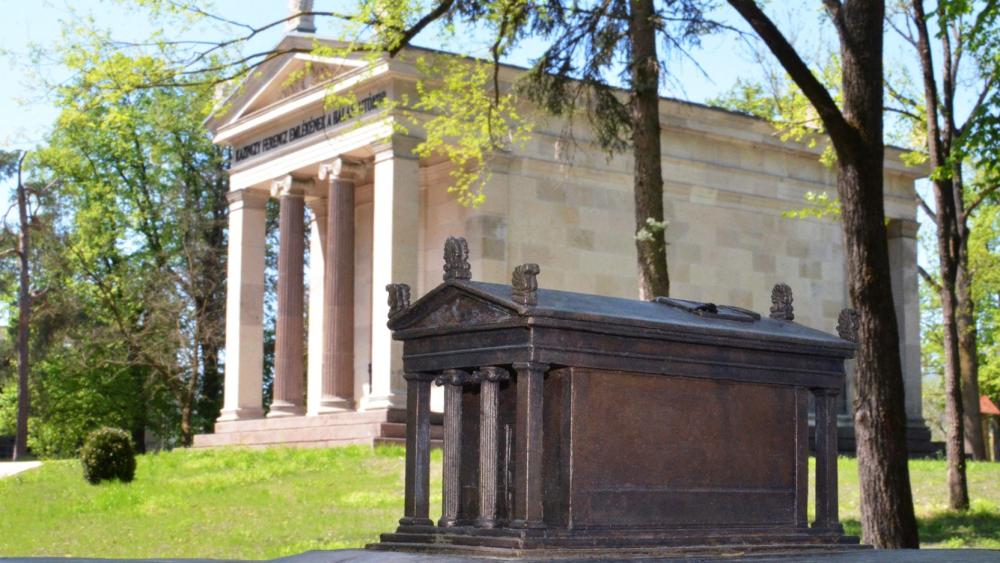
Ferenc Kazinczy lived, worked and farmed in this village, which today has a population of just over half a thousand and belongs to the administrative district of Sátoraljaújhely. He named the estate after his father. It was from here that he exerted an overwhelming influence on the thinkers of the time with his vast correspondence.
Széphalom is part of the town of Sátoraljaújhely in Borsod-Abaúj-Zemplén County. It is 257 km from Budapest and 50 km from Kassa. The village was first mentioned in 1440 as Kysbanya, and is said to have been founded by miners. It owes its fame and national renown to its former inhabitant, Ferenc Kazinczy, who lived and worked in this patrilineal inherited area from the time of his release from captivity until his death. In his time, the place where the present memorial garden is located was known by many names: Eresztvény, 'by the weeds', 'by the mill', and in Slovak 'by the bridge', or 'Pri-Mosztu'. The village, then officially called Kisbányácska, was named Széphalom by Kazinczy. The estate and the associated mercenary houses and other buildings developed into a settlement during the 19th century, which was originally part of the Abaúj county and only became part of Zemplén in 1883. In 1886, the official part of the settlement was given the name Széphalom. Merged with Hosszúláz in 1940, Széphalom was annexed to Sátoraljaújhely in 1981.
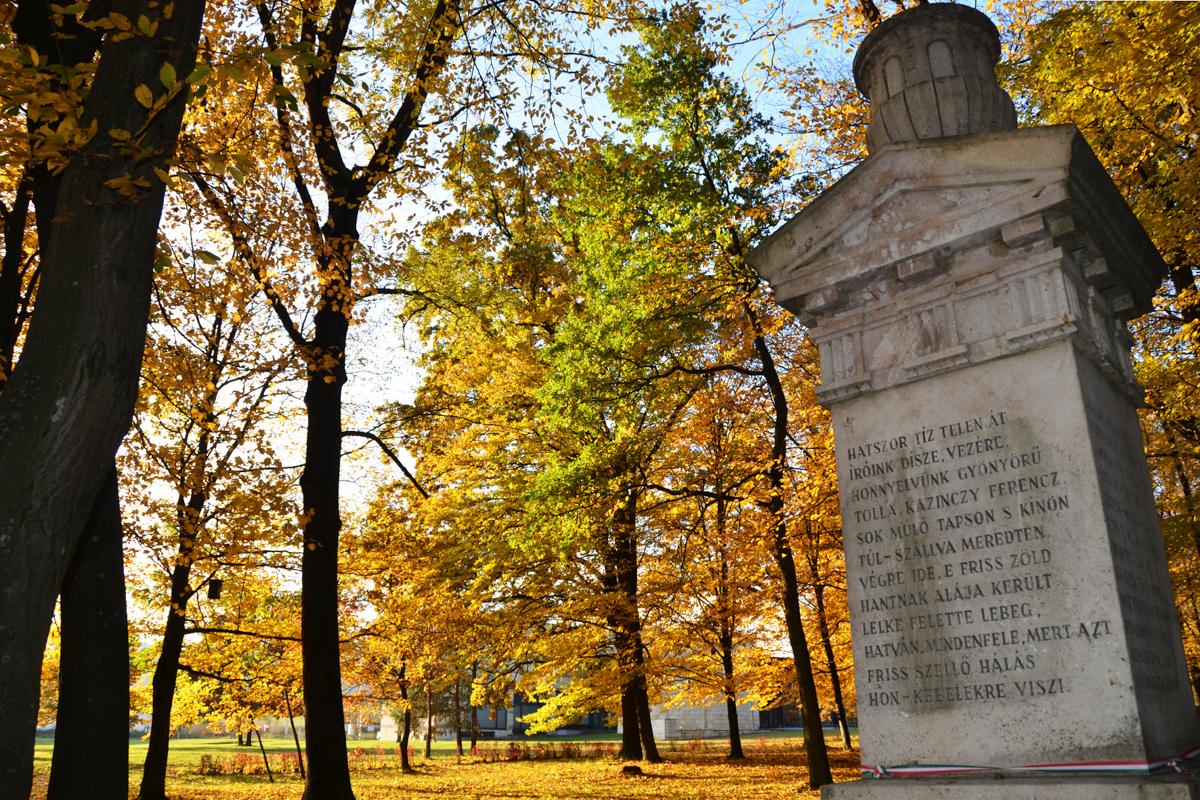
The Kazinczy Memorial Garden took on its defining form at the beginning of the 20th century, but its history dates back to the mid-19th century. It was then that the Kazinczy Mansion and its surroundings were purchased by the Hungarian Academy of Sciences and the family debts on the site were settled. After Kazinczy's death in 1831, the garden and the house suddenly fell into disrepair: plants took over the grounds and the unfinished, unplastered house, which had never been finished, fell into rapid decay. The admirers of Kazinczy's spirit were unimpressed: leading figures of public life and literature could still see the ruined building when they laid their heads at Kazinczy's grave. So did Sándor Petőfi, who visited Széphalm in 1847. As János Arany put it, 'the whole of Széphalom is a sad picture of desolation'. As János Arany said, "the whole Széphalom is a sad picture of abandonment". Perhaps he was also influenced by the memory of this visit when, as Secretary General of the Hungarian Academy of Sciences, he initiated the financial settlement of the Kazinczy Porta. The Academy bought the property and had Miklós Ybl build a neoclassical mausoleum, which, although much smaller than the first plans, was still impressive and was completed by Antal Szkalnitzy. Legend has it that the mausoleum was built on the site of Kazinczy's study. The Memorial Hall has been open to visitors since 1876. Its present-day furnishings were gradually added from 1882, and Bálint Becske, the writer's enthusiastic grandson, is credited with the collection of relics.
From the window of Kazinczy's former study, you can now see the family burial place from the entrance to the Memorial Hall. The first grave was dug in the garden of the former mansion in 1806, when the Kazinczy couple's first-born died as a child. The family members were later laid to rest in consecrated ground during the first burial. In addition to the great literary organiser, his wife Török Sophie, his three children and their family members, as well as distant relatives, are buried here. The original of the writer's tombstone was commissioned by his wife in 1833. The path from the memorial hall to the graves is lined with a grove of hornbeams. From the grave, towards the neighbouring Kossuth Garden, there are oak trees with trunks of probably 120-150 years old and a trunk of four metres.
In 2008, the Museum of the Hungarian Language was built in the Kazinczy Memorial Garden, in a part of the building further away from the road, which is now a part of the Petőfi Literary Museum. The institution welcomes a significant number of visitors, tens of thousands of them every year, and promotes the use of the Hungarian language in the Carpathian Basin through its cultural programmes and exhibitions.
CONTACT
Petőfi Literary Museum - Museum of the Hungarian Language
3988 Sátoraljaújhely-Széphalom, Kazinczy utca 275.
GPS coordinates: 48.436420, 21.622050
Phone: +36 47 521 236
E-mail: info@nyelvmuzeum.hu
Website: https://nyelvmuzeum.net/
